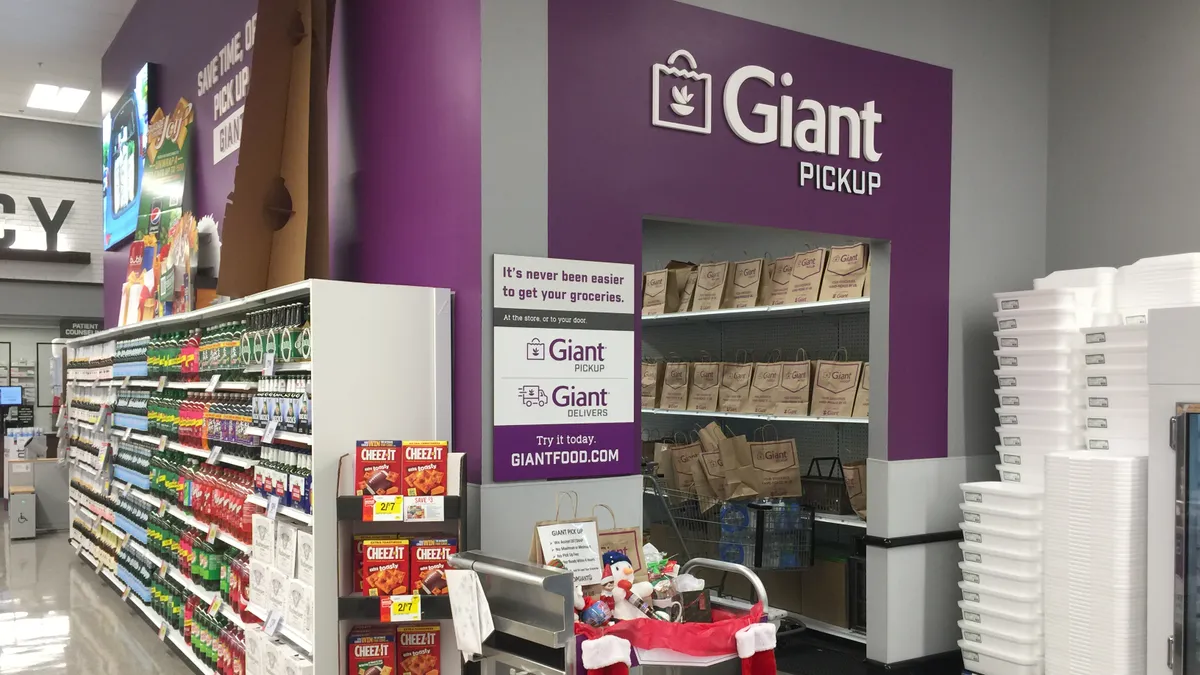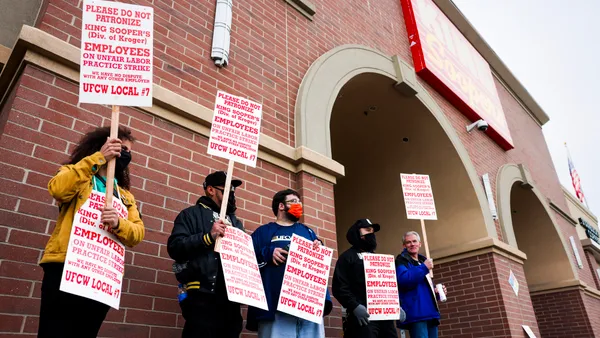Dive Brief:
- Grocery e-commerce sales are predicted to increase at a compound annual growth rate of 4.5% over the next five years — more than three times faster than the 1.3% rate forecasted for in-store grocery sales, Brick Meets Click reported in its U.S. eGrocery Sales Forecast: 2024-28 report released Wednesday.
- Total grocery e-commerce sales are projected to reach nearly $120 billion annually by the end of 2028, accounting for 12.7% of total grocery sales in the U.S., the report found. Pickup is expected to lead the pack as the most popular e-commerce method.
- Brick Meets Click Partner David Bishop credits a maturing e-commerce market and inflation’s slowdown as the greatest factors impacting the grocery e-commerce forecast.
Dive Insight:
Over the next five years, grocery e-commerce growth is expected to bolster overall grocery sales more than in-store sales, according to Brick Meets Click’s report.
Overall U.S. grocery sales are predicted to increase at a compound annual growth rate of 1.6% through 2028, a significant decrease from the 5.6% growth the market saw over the five years ending in 2023, according to the report developed by Brick Meets Click and sponsored by Mercatus.
Excluding ship-to-home, which is a service most grocers don’t offer, delivery and pickup sales combined will represent 10.7% of total grocery sales by 2028, according to Brick Meets Click.
Separately, pickup is expected to grow faster (5.4%) than delivery (4.4%) and ship-to-home (2.8%) with pickup predicted to account for nearly 47% of all online grocery sales come 2028. However, the availability of pickup continues to trail delivery in today’s market because most grocery retailers enter the online segment through the latter and with third-party marketplaces. This distribution gap is predicted to shrink by 2028 as grocers broaden their pickup services.
Third-party marketplaces represented more than half of online grocery sales on average last year..
Grocers will likely focus on driving demand toward their own first-party services rather than third-party partners as they compete in a slower-growth online market to “better control operating expenses and the customer experience,” Brick Meets Click said.
The report also found that the most important growth driver for e-commerce through 2028 will be order frequency, since expanding the active user base for the channel will become more challenging.
Despite inflation’s downward trend, “its cumulative effect continues to drive a flight-to-value behavior in grocery shopping that will slow topline sales growth,” Bishop said in a statement. This shopper behavior continues to push customers to mass retailers.
The mass merchant format, led by Walmart, has expanded its market share by 6.2% since 2021, ending 2023 with about 45% of grocery online sales. This continued growth from mass merchants will continue to put pressure on supermarket chains, as a comparable basket of groceries at Walmart costs shoppers 10% to 20% less than at a rival grocery store, Brick Meets Click found.













